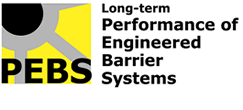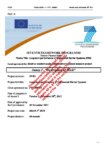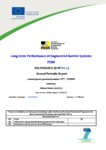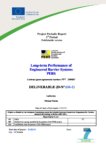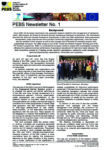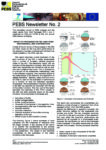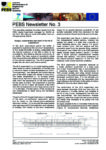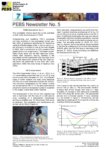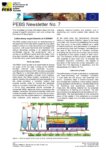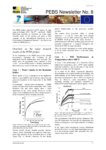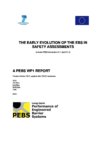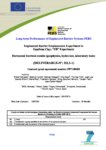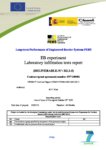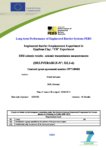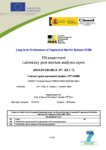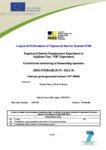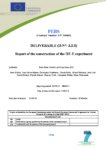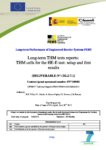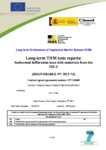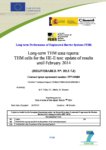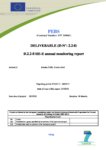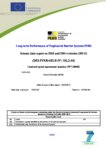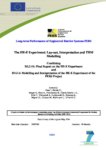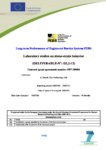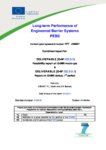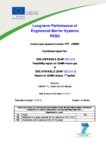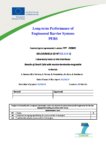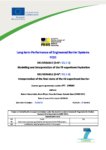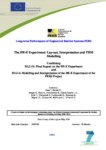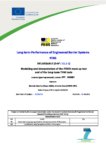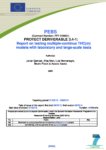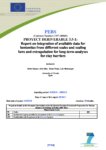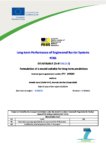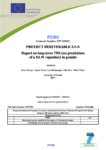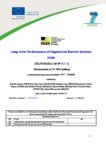PEBS: Long-term performance of Engineered Barrier Systems
PEBS aimed to evaluate the sealing and performance of the engineered barrier with time. The project involved experimentation and modelling, with consideration of the potential impacts on long-term safety functions.
Overview
Project Dates: 01/03/2010 – 28/02/2014
Project Status: Finished
Project website: https://www.pebs-eu.de/
The PEBS (Long-term Performance of Engineered Barrier Systems) project was initiated to evaluate the sealing and barrier performance of clay-based engineered barrier systems (EBS) over time. This project took a comprehensive approach involving experiments, model development and consideration of the potential impacts on long-term safety functions. The project aims were to:
- deepen the knowledge and understanding of the THM and THM-C (thermo-hydro-mechanical and -chemical) evolution of the EBS system;
- provide a more quantitative basis for relating the evolutionary behaviour to the safety functions;
- clarify further the significance of residual uncertainties for long-term performance assessment.
The work performed within the project built on existing knowledge and experience gained during past years and supported by ongoing national and EC research programmes. The experiments and models covered the full range of conditions from the early post-closure stage (high heat generation and EBS resaturation) through to later stages with the establishment of near steady-state conditions, i.e. full resaturation and thermal equilibrium with the host rock. A broad spectrum of laboratory and in-situ experiments were covered by the project, some of which have been in progress for many years (e.g. the FEBEX full-scale laboratory mock-up and the associated in-situ experiment at Grimsel, as well as the EB experiment at Mont Terri). In addition, new in-situ experiments were developed specifically for the project (e.g. the half-scale heater experiment with clay-based barrier at Mont Terri).
Findings of the experimental studies were integrated into numerical codes for the simulation of coupled thermal, hydraulic, mechanical and chemical (THM(-C)) processes in the EBS and near-field rock. The importance of uncertainties arising from potential disagreement between models and experiments were also assessed. Particular emphasis was put on possible impacts of residual uncertainties on safety functions over the short and long term.
Objective
The main aim of the PEBS project was to evaluate the sealing and barrier performance of the EBS over time. The project was divided into 6 work packages, each with individual objectives, outlined below.
Work Package 1, Analysis of system evolution during early post closure period: Impact on long-term safety functions
Work package 1 focused on the early period of repository evolution. This is characterized by an elevated temperature together with strong thermal and hydraulic gradients (possibly mechanical and chemical as well). Th e main objectives of this work package were to:
- identify important processes during the early evolution of the EBS;
- describe the current treatment of the early evolution of the EBS in long-term safety assessments for spent nuclear fuel;
- discuss how the short-term transients will/may affect the long-term performance and the safety functions of the repository;
- identify the merits and shortcomings of the current treatment;
- discuss the needs for additional studies of these issues and how they can support future assessments (give directions to other WPs); and
- define “scenarios” related to events in the early evolution of the EBS.
Work Package 2, Experimentation on key EBS processes and parameters
All the PEBS experimental work was included in WP2. The overall objectives of this Work Package were:
- to evaluate the key HM, THM, and THMC processes and parameters taking place during the early evolution of the EBS; and
- to provide reliable good quality experimental HM, THM and THMC databases, including different time and spatial scales, and input to the modelling and extrapolation work to be conducted within WP3
Work Package 3, Modelling of short-term effects and extrapolation to long-term evolution
Work package 3 contained the principal modelling work. The overall objectives of this Work Package were:
- to perform coupled HM, THM, and THMC analyses to provide a sound basis for the interpretation of the various tests planned in the frame of the PEBS WP2;
- to develop new or improved models as demanded by the calibration of computation results with the actual measured data; and
- to use the data and improved models for extrapolation to long-term evolution of the repository taking into account the scenarios defined in PEBS WP1 and to investigate model uncertainty and its impact on long-term prediction, thus providing input to PEBS WP4.
Work Package 4, Analysis of impact on long-term safety and guidance for repository design and construction
The overall objectives of this Work Package were to:
- obtain an overview of the findings of WP2 and WP3 and relate the results and uncertainties to the long-term safety functions of the repository components and to the overall long-term performance of the repository, as outlined in WP1; and
- use these outcomes to give some guidance regarding repository design, by clarifying the link between long-term safety criteria and design criteria of the EBS.
Work Package 5, Dissemination
The objective of WP5 was the dissemination of the results on a national, European and international level.
Work Package 6, Project Management
The overall objective of this work package was the successful management of the collaborative project to achieve its goals (quality of result, resources, time).

